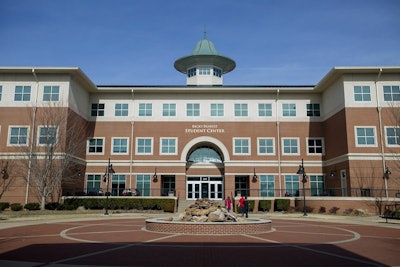Students who live in the college’s district pay a tax according to their assessed property value, so their in-district tuition will continue to be $75 per credit hour.
Those who live outside of the district will see a $12.50 increase in their tuition, from $122.50 to $135 per credit hour. Students paying out of state tuition will see a $25 increase from $125 to $150 per credit hour and international students will experience a $20 increase in their tuition, from $175 to $195 per credit hour.
 Northwest Arkansas Community College
Northwest Arkansas Community College
Laboratory fees for the graphic design and art programs will also increase by $15, from $35 to $50 per course, according to the Northwest Arkansas Democrat Gazette.
As a result of these increases in tuition, officials predict it will to generate over $1 million in revenue for the school. This, in addition to the $159,000 from the projected increase in state funding and $396,000 from the projected increase in millage money, will pay for $1.6 million in budget requests not funded, NWACC officials said.
“With this increase, I will be able to balance the budget,” said Gulizar Baggson, associate vice president of finance for the college.
Baggson did not provide an estimate on what the 2020 budget would be. However, the college’s budget for fiscal 2018 was $42.2 million.
Initially, Baggson proposed a general tuition increase at a recent board meeting that would have included students living within the college district. This would have caused in-district tuition to increase by $4, whereas out-of-district tuition would have increased by $9.50, out-of-state by $20 and international by $13, the release said.
Board chairman Joe Spivey asked Baggson to recalculate the tuition increases by keeping the in-district rate flat by increasing others.
“It’s important that we be fair to our millage payers in the Rogers and Bentonville school districts,” Spivey said. “We need to keep our stakeholders in mind when we’re considering any kind of tuition increase.”
College officials made the change in tuition rates in order to show students what they’re degree is going to cost, in addition to establishing a new 12,000-square-foot plant that would be utilized for additional workforce education programming.
The state department also emphasized the tuition increase would help with student retention rates, said board trustee Mark Scott.















